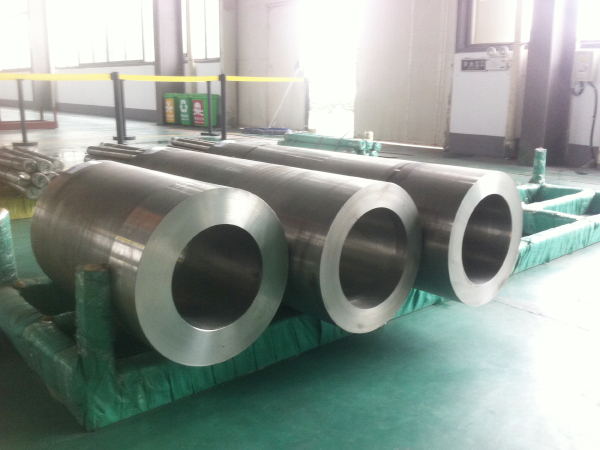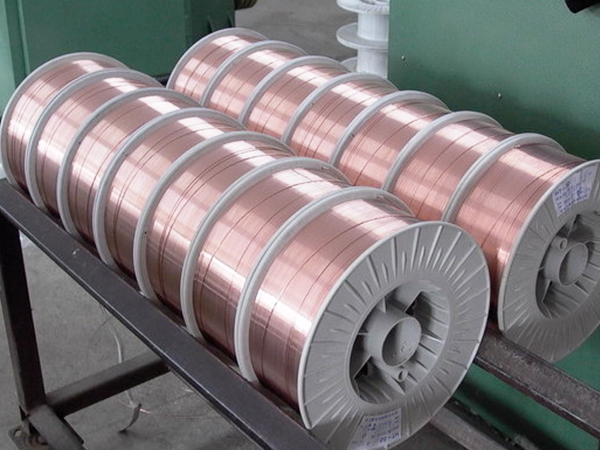Nickel - base corrosion resistant alloys have emerged as a class of materials with remarkable properties that make them highly attractive for a wide range of industrial applications. In an industrial landscape where equipment often operates under harsh conditions involving corrosive media, high temperatures, and mechanical stresses, the need for materials with superior corrosion resistance and mechanical integrity is more crucial than ever. These alloys, with nickel as their primary base element, have shown great potential in meeting these challenges, leading to an increasing adoption across various sectors.

1. Understanding Ni - Base Corrosion Resistant Alloys
1.1 Composition and Alloying Elements
Nickel - base corrosion resistant alloys typically contain nickel as the matrix, with nickel content often exceeding 50%. This high nickel content provides a stable and ductile foundation. Alloying elements are then added to enhance specific properties.
Chromium is a common addition. It improves the alloy's resistance to oxidizing media such as nitric acid and chromic acid. Chromium forms a passive oxide layer on the alloy's surface, which protects it from further oxidation and corrosion. For example, in Ni - Cr alloys like Inconel 600, the addition of chromium increases its applicability in oxidizing environments.
Molybdenum is another important alloying element. It substantially improves the alloy's resistance to non - oxidizing acids. Commercial alloys with up to 28% molybdenum have been developed for use in non - oxidizing solutions of hydrochloric acid (HCl), phosphoric acid (H3PO4), and hydrofluoric acid (HF), as well as in sulfuric acid (H2SO4) at concentrations below 60%. Molybdenum also significantly enhances the pitting and crevice corrosion resistance of nickel - base alloys.
Copper additions improve the resistance of nickel to non - oxidizing acids. Alloys containing 30 - 49% copper offer useful resistance to non - aerated sulfuric acid and excellent resistance to all concentrations of non - aerated hydrofluoric acid. Adding 2 - 3% copper to nickel - chromium - molybdenum - iron alloys has also been found to improve resistance to hydrochloric acid, sulfuric acid, and phosphoric acid.
1.2 Microstructure and Metallurgical Stability
Nickel - base corrosion resistant alloys generally have a face - centered cubic (FCC) crystal structure, which is the same as that of pure nickel up to its melting point. This structure contributes to their high ductility and toughness. The alloys are often solution - strengthened, where the addition of alloying elements such as molybdenum and tungsten increases the strength by disrupting the regular crystal lattice. Some nickel - base alloys can also be precipitation - hardened. These alloys, which are often used in applications requiring ultra - high strength, such as in deep oil and gas production and ultra - high - pressure processes, undergo a heat treatment to precipitate fine - scale particles that strengthen the alloy.
2. Superior Corrosion Resistance
2.1 Resistance in Diverse Chemical Environments
Ni - base corrosion resistant alloys exhibit excellent performance in a variety of chemical environments. In the chemical processing industry, they are used in reactors, heat exchangers, and distillation columns. For instance, in the production of chemicals, petrochemicals, and pharmaceuticals, these alloys encounter aggressive chemicals and high temperatures. Hastelloy alloys, which are nickel - base alloys, are well - known for their resistance to acids, alkalis, and other corrosive substances. They can withstand the harsh conditions in these industries, ensuring the longevity and reliability of the equipment.
In the presence of halide - containing aqueous solutions, nickel - base alloys are far superior to austenitic stainless steels. Austenitic stainless steels are prone to corrosion in chloride and fluoride solutions, while nickel - base alloys can resist such attacks. This makes them ideal for applications in industries where exposure to halide - containing media is common, such as in certain chemical manufacturing processes and in some parts of the oil and gas industry.
2.2 Resistance to Different Forms of Corrosion
These alloys not only show low metal loss in uniform corrosion scenarios but also have better resistance to local corrosion. Pitting and crevice corrosion are common forms of local corrosion that can cause significant damage to industrial equipment. Nickel - base alloys, due to their alloying elements and stable microstructure, are more resistant to these types of corrosion.
Intergranular corrosion, which occurs along the grain boundaries of a material, is also effectively combated by nickel - base alloys. The addition of elements like titanium (Ti) and niobium (Nb) helps to tie up carbon, preventing the formation of chromium - depleted zones at the grain boundaries, which are susceptible to intergranular corrosion.
Stress corrosion cracking (SCC), a serious form of corrosion that occurs when a material is under tensile stress in a corrosive environment, is a major concern in many industries. Nickel - base alloys generally have better resistance to SCC compared to some other materials. However, it should be noted that under specific conditions, such as in hot caustic and wet hydrochloric acid environments, they can still be susceptible to SCC.
3. Industrial Applications
3.1 Chemical Industry
The chemical industry is one of the major consumers of nickel - base corrosion resistant alloys. In chemical reactors, where highly reactive chemicals are processed at elevated temperatures and pressures, the alloys' ability to resist corrosion and maintain mechanical strength is crucial. For example, in the production of acetic acid, which is a common chemical in the industry, nickel - base alloys are used in the reactor vessels and associated piping systems. The alloys can withstand the corrosive nature of acetic acid and its precursors, ensuring the continuous and safe operation of the production process.
In the manufacture of fertilizers, where phosphoric acid and other corrosive chemicals are involved, nickel - base alloys find extensive use. They are used in equipment such as heat exchangers, which transfer heat between different process streams while being resistant to the acidic and often high - temperature environment.
3.2 Oil and Gas Industry
In the oil and gas industry, nickel - base corrosion resistant alloys are used in various applications. Downhole, in oil and gas wells, the environment is extremely harsh, with high pressures, high temperatures, and exposure to corrosive fluids such as hydrogen sulfide (H2S) and carbon dioxide (CO2). Nickel - base alloys are used in the production tubing and casing to prevent corrosion and ensure the integrity of the wellbore.
In offshore oil and gas platforms, the equipment is exposed to seawater, which is highly corrosive. Nickel - base alloys such as Monel, Inconel, and others are used in components like seawater injection systems, where they resist the corrosive effects of seawater, ensuring the efficient operation of the platform's water - handling systems.
3.3 Power Generation
In power generation, nickel - base alloys play a vital role. In gas turbines, which operate at high temperatures, components such as blades, discs, and casings are often made of nickel - base superalloys. These alloys can maintain their strength and resist oxidation at temperatures exceeding 1000 °C, ensuring the efficient and safe operation of the gas turbine.
In nuclear power plants, nickel - base alloys are used in components where corrosion resistance and high - temperature performance are required. For example, in the heat exchangers of nuclear reactors, these alloys can withstand the corrosive coolant environment and high - temperature conditions, contributing to the reliable operation of the power plant.
4. Market and Adoption Trends
4.1 Growing Demand
The demand for nickel - base corrosion resistant alloys has been steadily increasing in recent years. This growth is driven by several factors. Firstly, as industries expand and new projects are initiated, there is a greater need for reliable and durable materials that can withstand harsh operating conditions. The chemical industry, for example, is constantly growing, with new chemical plants being built around the world. These plants require high - quality materials for their equipment, and nickel - base alloys are often the preferred choice due to their corrosion resistance and mechanical properties.
Secondly, the aging of existing industrial infrastructure in many developed countries has led to a need for replacement and refurbishment. Nickel - base alloys are being increasingly used in these projects to ensure that the new or refurbished equipment has a longer lifespan and can operate more efficiently in corrosive environments.
4.2 Technological Advancements Driving Adoption
Technological advancements in alloy design and manufacturing processes are also contributing to the increased adoption of nickel - base corrosion resistant alloys. New alloy compositions are being developed that offer enhanced corrosion resistance and mechanical properties. For example, researchers are focusing on improving the thermal stability of these alloys so that they can be used in more extreme conditions. New compositions are being explored that maintain or even improve the mechanical properties of the alloys at temperatures beyond 1000 °C, which is vital for industries such as aerospace and power generation.
Advanced manufacturing techniques, such as additive manufacturing (3D printing), are also enabling the production of nickel - base alloy components with complex geometries. This allows for the optimization of component design, leading to better performance in industrial applications. Additive manufacturing can also reduce material waste and improve the efficiency of the production process.
5. Challenges and Limitations
5.1 Cost Considerations
One of the main challenges associated with nickel - base corrosion resistant alloys is their cost. Nickel is a relatively expensive metal, and the addition of other alloying elements such as chromium, molybdenum, and tungsten further increases the cost of the alloy. The high cost of these alloys can limit their use in some applications, especially in industries where cost - effectiveness is a major concern. For example, in some small - scale manufacturing operations or in applications where the corrosive environment is not extremely severe, less expensive materials may be chosen instead of nickel - base alloys.
5.2 Specific Corrosion Susceptibilities
Although nickel - base alloys generally have good corrosion resistance, they are not immune to all forms of corrosion. As mentioned earlier, under specific conditions, such as in hot caustic and wet hydrochloric acid environments, they can be susceptible to stress corrosion cracking. In some cases, the presence of certain impurities or contaminants in the corrosive medium can also affect the corrosion resistance of these alloys. This means that careful consideration of the operating environment is still required when choosing nickel - base alloys for an application.

6. Future Outlook
Despite the challenges, the future of nickel - base corrosion resistant alloys in industrial applications looks promising. The continuous development of new alloy compositions and manufacturing techniques will likely lead to further improvements in their performance. For example, the development of nanostructured nickel alloys, which exhibit improved mechanical strength, wear resistance, and overall performance due to their fine - grained microstructures, holds great potential.
As industries continue to push for higher efficiency, longer equipment lifespan, and the ability to operate in more extreme conditions, the demand for nickel - base corrosion resistant alloys is expected to grow. In the chemical industry, the need for materials that can withstand increasingly complex and corrosive chemical processes will drive the adoption of these alloys. In the energy sector, with the growth of both traditional power generation and emerging energy technologies such as nuclear fusion, nickel - base alloys will play an important role due to their high - temperature and corrosion - resistant properties.
In conclusion, nickel - base corrosion resistant alloys are indeed gaining momentum in industrial applications. Their unique combination of corrosion resistance, mechanical properties, and ability to withstand harsh environments makes them an attractive choice for a wide range of industries. While challenges such as cost and specific corrosion susceptibilities exist, ongoing research and technological advancements are likely to overcome these obstacles and further expand the use of these alloys in the future.